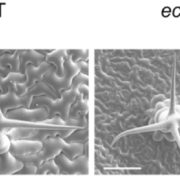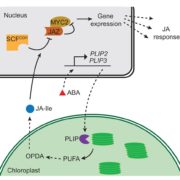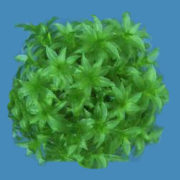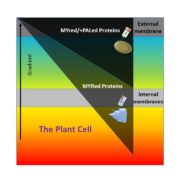
Live and Let Die: Phosphatidic Acid Modulates the Self-Incompatibility Response
Research, The Plant Cell, The Plant Cell: In BriefPollen tubes are remarkable vehicles that deliver immobile sperm nuclei from the stigma to the ovule during angiosperm reproduction. Their journey delicately balances turgor pressure with the precise spatiotemporal regulation of polarized growth machinery to navigate pollen tubes and their cargo to the…

Life of PPi: Soluble PPases and H+-PPase act cooperatively to keep pyrophosphate levels in check
Blog, Research, The Plant Cell, The Plant Cell: In BriefInorganic phosphate (PPi) is a byproduct of many metabolic reactions, including those involved in sucrose, sugar nucleotide, and cellulose biosynthesis. Although PPi is an important phosphate donor and source of cellular energy, high levels of cytosolic PPi are toxic, disrupting the metabolic reactions…

A Tale of Three Studies: Uncovering the Crucial Roles of m6A Readers
Blog, Research, The Plant Cell, The Plant Cell: In BriefThe story behind m6A (methylation of the N6 position of adenosine), the most common internal mRNA modification in eukaryotes, has long been a source of intrigue. This epitranscriptomic mark is deposited at specific mRNA sequences by m6A writers and removed by m6A erasers. The m6A marks recruit and anchor…

The Lipase Link: Abscisic Acid Induces PLASTID LIPASES, Which Produce Jasmonic Acid Precursors
Blog, Research, The Plant Cell, The Plant Cell: In BriefCrosstalk, crosstalk— it’s a word that keeps coming up. Indeed, and perhaps not surprisingly, plant hormone signaling pathways all seem to affect each other to some extent. For example, the MYC2 transcription factor plays roles in abscisic acid (ABA) and jasmonic acid (JA) signaling in the response…

Divide and Conquer: High-Throughput Screening of Chlamydomonas Cell Cycle Mutants
Blog, The Plant Cell, The Plant Cell: In BriefCell division is essential for growth and reproduction. The cell cycle machinery is well conserved between yeast and animals, but whether this conservation extends to the plant lineage is not clear, having diverged over two billion years ago: ample time and opportunity for divergence in sequence and…

RecQ Proteins: Masters of Genome Surveillance
Research, The Plant Cell, The Plant Cell: In a NutshellWiedemann et al. show that RecQ6 in Physcomitrella enhances homologous recombination and gene targeting https://doi.org/10.1105/tpc.17.00632.
Background: All living cells have mechanisms to protect their DNA against breaks during duplication and against damage by UV-light or chemicals. RecQ helicases…

Small Peptide PSK Induces Plant Immunity Against Botrytis cinerea
Research, The Plant Cell, The Plant Cell: In a NutshellZhang et al. show how PSK initiates Ca2+- and auxin-dependent immunity https://doi.org/10.1105/tpc.17.00537.
By Huan Zhang, Zhangjian Hu and Kai Shi
Background: During plant-microbe interactions, some small secreted peptides are secreted into the apoplast between plant cells as damage-associated…

Lipid Anchor: Postal Code for Proteins on the Road to Membranes
Research, The Plant Cell, The Plant Cell: In a NutshellMajeran et al. investigate how plant cells target proteins to membrane compartments https://doi.org/10.1105/tpc.17.00523
By Wojciech Majeran, Thierry Meinnel & Carmela Giglione
Background: Living cells are encased in an oily barrier, the plasma membrane, made up of a double layer of lipids…

PLANT PROTEIN MEETS HOMER´S TROJAN HORSE
Research, The Plant Cell, The Plant Cell: In a NutshellBy Karina van der Linde and Virginia Walbot
Background: In contrast to animals in which meiotically competent cells develop in embryos, plants switch from vegetative to reproductive growth only during flowering. In maize, the most productive cereal crop, the tassel contains male flowers in which…

